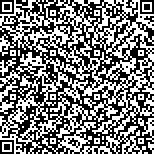| 摘要: |
| 在室内模拟条件下研究了在海泥中硫酸盐还原菌(SRB)对A3钢电偶效应的影响。实验在两个大型塑料槽中进行。A3钢样尺寸为20cm×10cm×0.3cm,海泥中SRB的含量用MPN三管计数法进行测定;电导率、pH、氧化还原电位、泥温和盐度等参数用SY-5型电导-pH/mV-温度计进行测量;用失重法测量腐蚀速度;用零电阻表测量电偶电流。试验共进行261d。SRB含量随时间的变化基本保持恒定。在电偶条件下A3钢在灭菌泥和有菌泥中的腐蚀速度分别为0.0077mm/a和0.049mm/a,在非电偶条件下A3钢在灭菌泥和有菌泥中的腐蚀速度分别为0.0089mm/a和0.044mm/a。A3钢在有菌泥和无菌泥中的样板之间的电偶电流随时间的变化幅度在25μA左右,且有方向逆转现象。试验结果表明,在有菌泥中A3钢的腐蚀速度是无菌泥中的5.5倍,说明SRB在海泥腐蚀中有重要作用。埋在相邻的有菌海泥和无菌海泥的试样之间都发生了电偶腐蚀。处在有菌海泥中的钢样为电偶对的阳极,处在无菌海泥中的钢样为电偶对的阴极。在实验期间内电偶效应对试样的加速作用为11.4%。 |
| 关键词: 海泥 硫酸盐还原菌 钢铁 电偶效应 |
| DOI:10.11693/hyhz200004017017 |
| 分类号: |
| 基金项目:国家自然科学基金资助项目,49276272号;“九五”中国科学院资源与生态环境研究重大资助项目,KZ951-A1-405-04号 |
附件 |
|
| EFFECT OF SULFATE REDUCING BACTERIA ON GALVANIC ACTION OF A3 STEEL IN SEA MUD |
|
ZHANG Jing-lei, ZHANG Jing-lei, HOU Bao-rong, LIU Yu-shan, GUO Gong-yu, LIU Yu-shan, GUO Gong-yu
|
|
Institute of Oceanology, The Chinese Academy of Sciences, Qingdao266071
|
| Abstract: |
| The effect of sulfate reducing bacteria (SRB) on corrosion of steel is a main factor in sea mud. In this paper, the effect of SRB on galvanic action of A3 steel in sea mud has been studied in laboratory under simulated conditions. The test was performed in two large plastic troughs for 261 days. The size of A3 steel sample was 20cm×10cm×0.3cm. The content of SRB in sea mud was measured by MPN tri-tube method and kept basically no change with time during the test is shown in Fig.2. The conductance, pH, potential of oxidation–reduction, temperature, salt content in sea mud was measured by an SY-5 type conductance – pH/mV – thermometer. The corrosion rate was measured by weight loss method and the result obtained is shown in table1. The galvanic current was measured by zero-resistance current meter, and the change of galvanic couple current of A3 steel samples between bacterial and bacteria- free sea mud with time is shown in Fig.3. The results show that: (1) the corrosion rate of A3 steel in bacterial sea mud is 5.5 times that in bacteria- free sea mud; (2) galvanic corrosion occurs between steel samples (with the same properties) buried in bacterial and bacteria-free sea mud. The steel samples in the bacterial sea mud were the anode of galvanic couple and the steel samples in the bacteria- free sea mud were the cathode of galvanic couple. Accelerate rate of galvanic action on corrosion of anodic samples is around 11.4%. |
| Key words: Sea mud, Sulfate reducing bacteria (SRB), Steel, Galvanic action |
